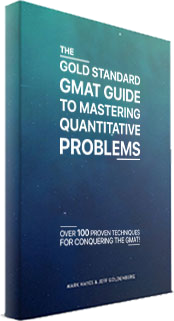
3 steps to tackle any GMAT question
General Sun Tzu once wrote that “strategy without tactics is the slowest route to victory. Tactics without strategy is the noise before defeat.” This same logic can be applied outside of the battlefield to the GMAT. We spend a lot of time discussing the details of how to address and tackle specific topics. Sun Tzu would refer to these plans as tactics. For today, I want to talk about the overarching mentality and approach that you should use to deal with any problem on the GMAT. I want to talk about strategy. It is no secret that you will need a wide range of skills, tools, and tricks to achieve victory. It is also true that you will need different tactics to address the different question types found throughout the GMAT. Still, the fundamental way that you initially approach and formulate your plan of action does not need to change between questions. You will need to have a solid battle plan to get through the GMAT, here is where to start.
Survey the Field
It is time for a little reconnaissance. What type of question are you looking at? Is it sentence correction or critical reasoning? Data sufficiency or problem solving? It should not take long to figure out what question type is on your screen, but remember to pause and actually figure it out before moving forward. You would be surprised how many testers either waste time, or flat out miss a question because they mixed up question types.
After you do this, read the question and write down any important information that you come across. It takes more time than you realize to look back and forth between your scrap paper and the screen every time you need to remember a figure. Do yourself a favor and put all the needed information in one place.
Prepare to Attack
After you understand the overall lay of the land, it is time to begin working on a more structured plan. Start this by focusing on the end of the question. What are you actually being asked to solve and, if applicable, what units is your answer supposed to be expressed in. You can understand all of the facts, figures, and ideas in a question, but still arrive at the wrong answer.
Once you know what you need to do, begin to organize the information that you wrote down before. This is where you need to begin to think about the individual tactics that are necessary for each question type. Think about how you need to solve the question and structure the information in such a way as to facilitate this plan.
Send in the Cavalry
Now is the time to put boots on the ground. You know what question type is in front of you, you have all of the information in order, and you have identified the parameters of the actual question, it is time to put your plan into motion. Employ the tactics that you have learned to solve the question.
All too often, testers charge into questions headfirst and do not give themselves the time they need to dissect the question. You would not charge into battle with a blindfold on and you should never take up arms against the GMAT without having a plan. Knowing how to approach a question is an invaluable step towards success. Do not neglect it.

